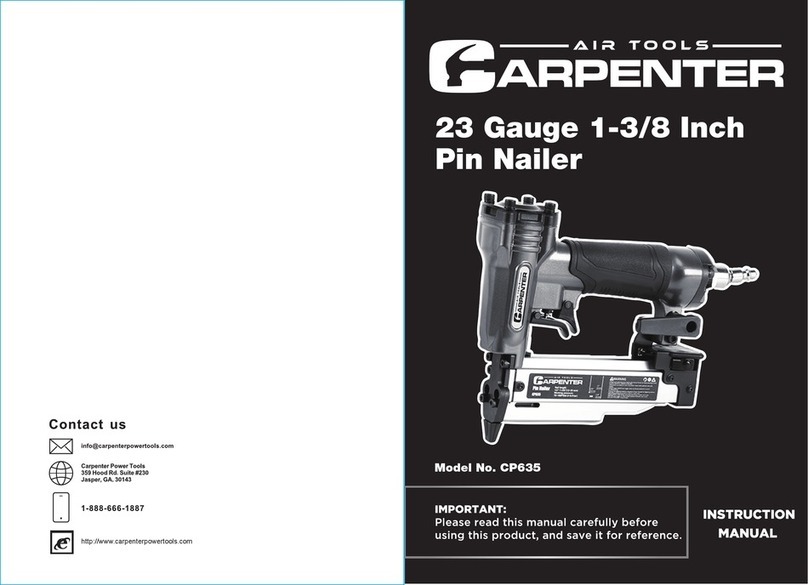
76
WARNING!
Potential hazard that could result in serious personal injury to
the tool user or others in the work area.
• Always wear eye and hearing protection when using the air compressor. Failure
to do so may result in sight or hearing loss.
• Do not overload the tool. Allow the tool to operate at its optimum speed for
maximum efciency.
• Do not point the tool towards yourself or other people, even when the tool has
stopped. Keep hands, feet, and all other parts of the body clear from work area.
• Do not attempt to clear nailer jams while the air hose is connected.
• Do not keep the trigger or the Push Lever pressed while loading nails.
SAFETY GUIDELINES
SAFETY GUIDELINES
NOTE: Some commercial air line drying liquids are harmful to “O” rings and seals—
Do not use these low temperature air dryers without checking compatibility.
SAFETY GUIDELINES
CAUTION!
• DANGER! Potential hazard that could result in serious personal
injury including possible death.
• Do not use oxygen or any other combustible or bottled gas to
power air-powered tools. Failure to observe this warning can
cause explosion and serious personal injury or death.
• Do not use this tool in the presence of flammable liquids, dust or gases. Sparks that
are created during use may ignite these materials.
• Use only compressed air to power air-powered tools. Use an approved air hose with
a minimum length of 25' (7.6 m).
• Do not allow inexperienced or untrained individuals to operate any air-powered tool.
• Keep hands and other parts of the body away from the Outlet (Firing Head) during use.
• Nails or objects in the workpiece can cause serious injury if they are deflected by the
workpiece.
• Keep children away from the work area. Do not allow children to handle power tools.
• Never point nailer toward yourself or anyone else.
• Always assume the nailer contains fasteners. Never point the nailer toward yourself or
anyone else, whether it contains fasteners or not. If fasteners are mistakenly driven, it
can lead to severe injuries. Never engage in horseplay with the nailer. Respect the nailer
as a dangerous working implement.
• Disconnect the tool from the air supply and turn off the
compressor before performing any maintenance, when the
tool is not in use, when it is being handed to another person,
when it is left unattended, or when loading and changing
nails. Failure to comply may result in injury or damage to
equipment.
• Do not exceed the maximum or minimum pressures.
Operating the tool at the wrong pressure (too low or
too high) may cause excessive noise or rapid wear.
• Use only Non-Detergent Air Tool Lubricating Oil for this tool.
• Near and below freezing, moisture in the air line may freeze and prevent tool
operation. Do not store in a cold weather environment to prevent frost or ice
formation. Frost and ice on the tools operating valves and mechanisms could
cause tool failure.
Potential hazard that could result in damage to the tool or property.
Model No. C1565 contact us 1-888-666-1887



























